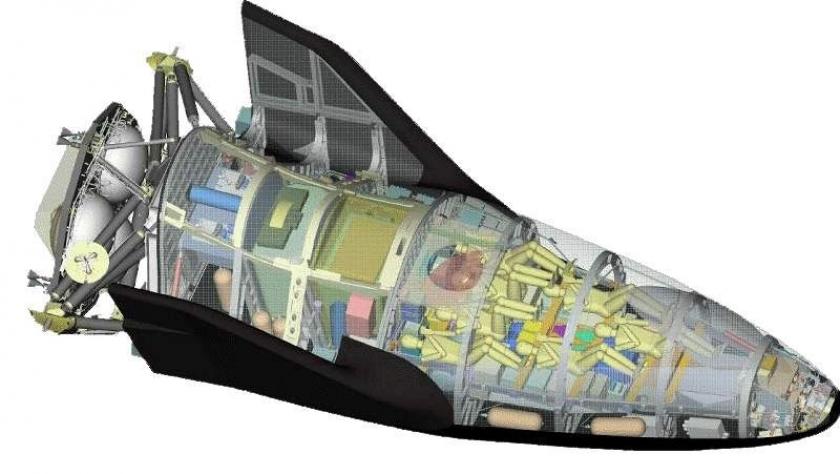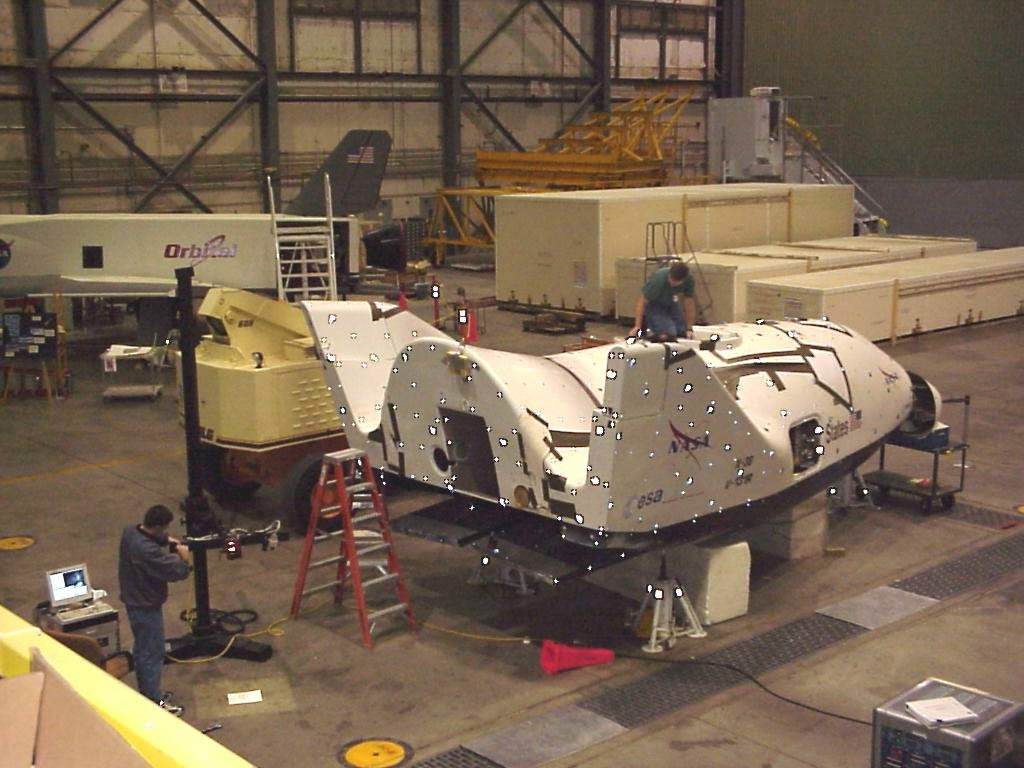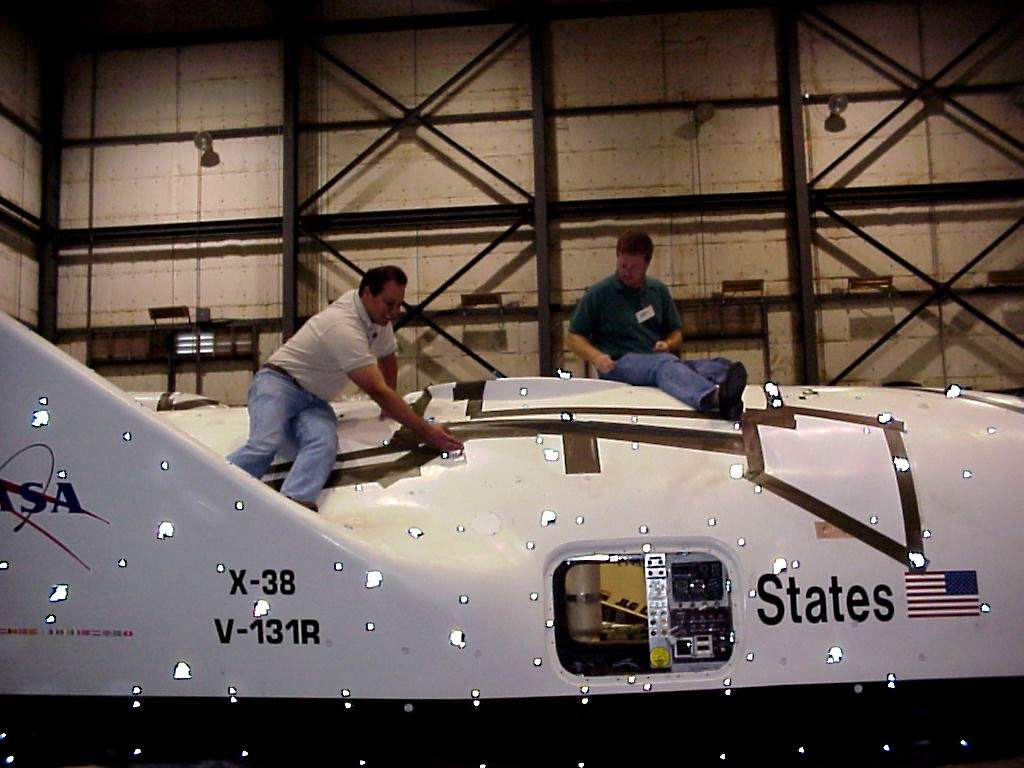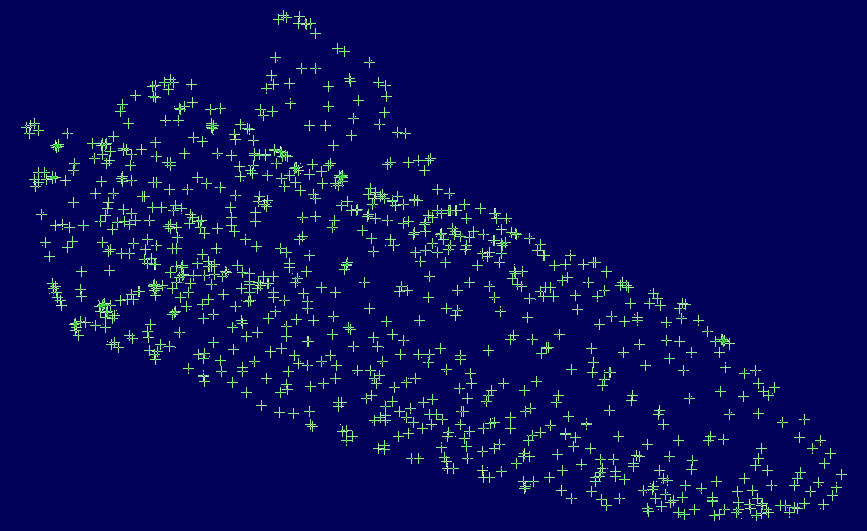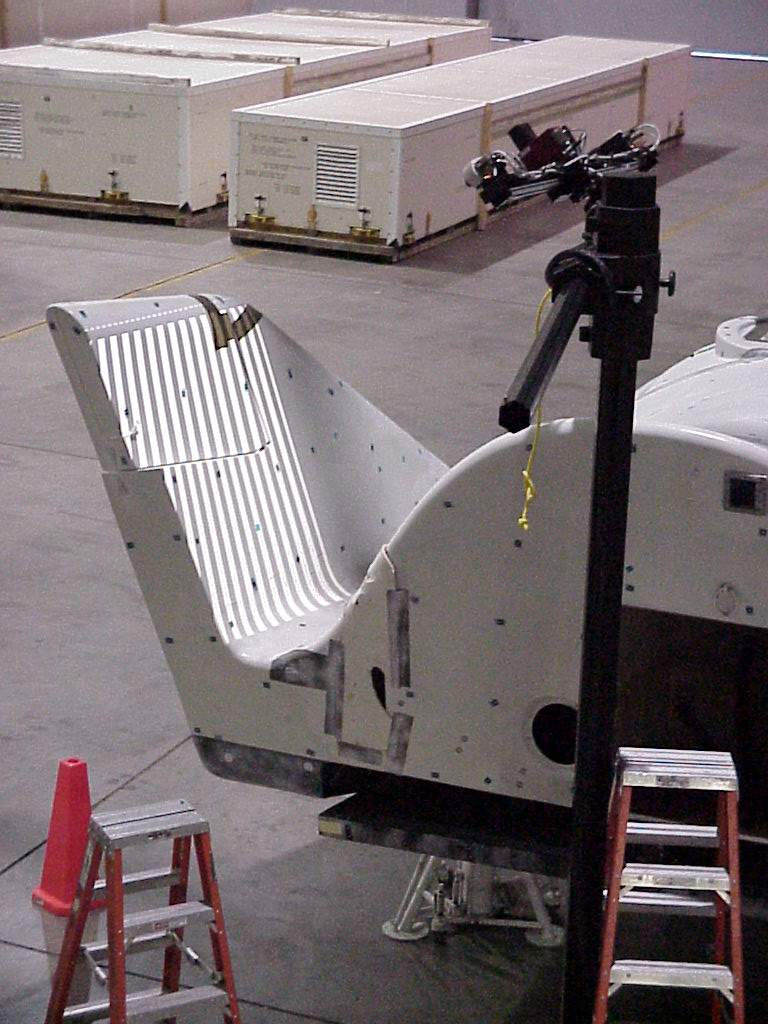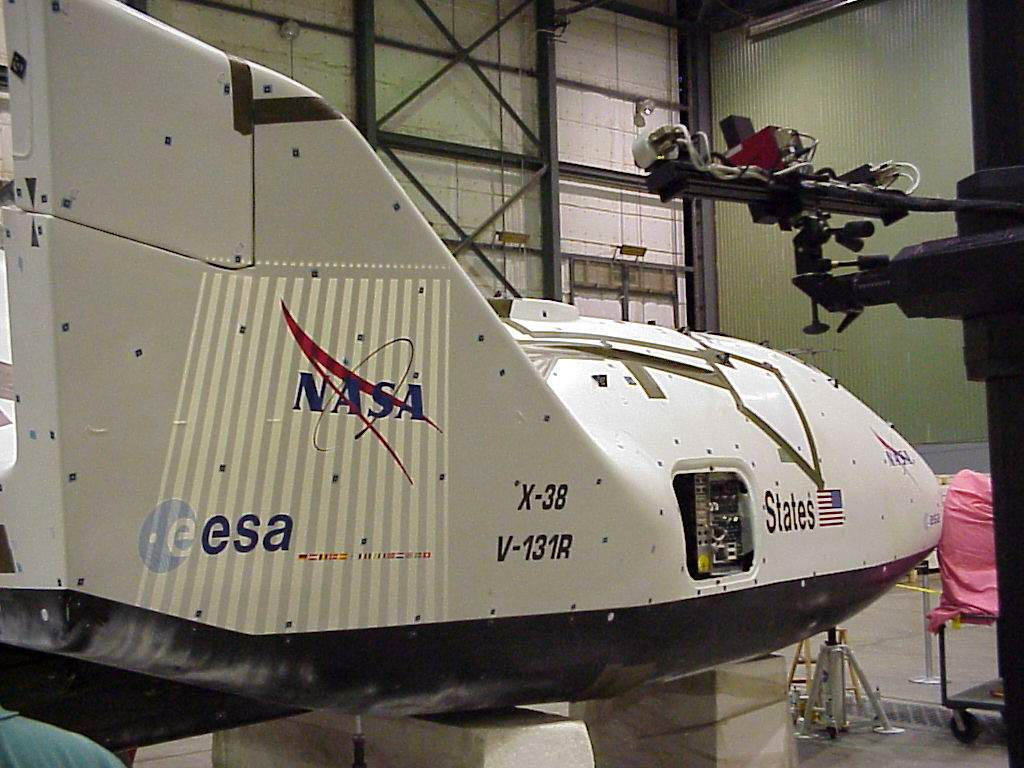NASA
3D Digitizing of the X-38 Space Vehicle
In the 90's, NASA started to develop the Autonom Crew Return Vehicle X-38. NASA started to develop the Autonom Crew Return Vehicle X-38. This vehicle is designed to bring up to 7 astronauts in an emergency case safe back to earth.
For this development, flight and landing test were made from increasing dropping altitudes. From these experiments, the computer simulation can be confirmed and refined to allow an optimization of the design. Very important for this process is that the form of the actual model matches the form of the object used in the simulation (CFD, Computational Fluid Dynamics). For this reason, the actual model has to be digitized with high accuracy and high data density during the development. From these actual data, CAD data is generated, which is used in the simulation.
In this application note, we show how the digitizing was done and how the data was treated to match the needs of NASA. The project was conducted by Capture 3D as a service work for NASA.
Digitizing was needed for the actual X-38 test vehicle, a 80% model, approx. 33 feet long, 12 feet tall and 10 feet wide. Based on these data, multiple evaluation tasks have to be started, e.g. "As Built Vs. As Designed", generate an "As Built" surface model for CFD Analysis and determine the effects of a previously "hard landing".
Why did NASA select TRITOP and ATOS over other systems?
- The vehicle is a working prototype which has to be digitized as it is.
- The part is too big for existing CMM's and this process is too time consuming
- Previously work was done with a Laser Tracker, giving accurate, but not dense data. Now NASA wanted to ensure a full vehicle definition with ample data density on the big surfaces as well as in critical areas
- Data is needed which can support rapid surfacing from polygon mesh. ATOS ensures direct polygonal mesh data output in different data densities, for efficient, quick and detailed CAD generation
Special conditions for this measurement
The model has to be scanned in a working vehicle bay, during standard work at the vehicle by the HVAC retro fit crew. No special treatment of the object is allowed and a full surface digitizing with high data accuracy and high data density is needed. Bay doors are opening and closing and ambient lighting changes will happen in addition to the object movements. Furthermore, the underside of the vehicle has only 3 feet clearance from the floor.
These conditions ask for a scanning system which registers the ambient conditions, is insensitive for these influences and keep the user informed if the conditions influence the data integrity. In addition the scanning system has to be able to work with big areas, with the ability to be set up to a smaller measuring are with short standoff distance do to the restricted space under the object, to allow an efficient data acquisition.
To start the measurement, coded and non-coded markers and two scale bars are applied onto the model. In addition some adapter targets are placed in reference bores of the model to define the coordinate system. Then the digital images are captured which allow TRITOP to define the exact coordinates of all markers based on the photogrammetric principle. From this TRITOP measurement, the reference file for the detailed digitizing is derived.
The digitizing of the upper and the side surfaces was made with the ATOS set to a measuring volume of 800x640x640mm.
Results
The color plot showing the deviations from the actual model versus the CAD data was made in two hours. This plots show a very good fit of the actual form to the CAD data. Only the symmetry of the wings was slightly out of tolerance. In addition it could be shown what the "hard landing" had not caused damaged the form of the model.
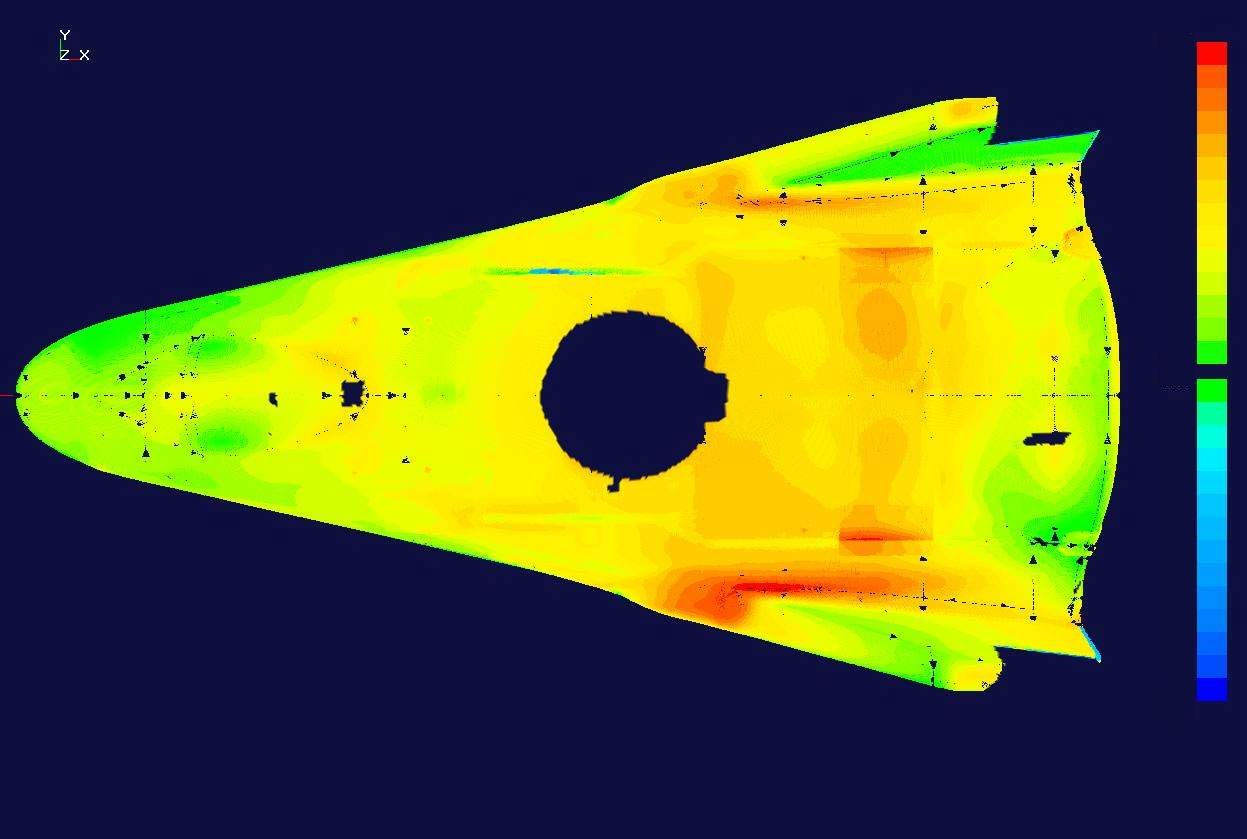 |
 |
For the CFD (Computational Fluid Dynamics), a CAD model was derived in 8 hours based on the thinned out data from ATOS. For detailed analysis, a fine CAD model was built based on the dense ATOS data in days.
The project triggered a modification on the model and was regarded from all involved parties as very positive.
Based on this service job, the data integrity and density, NASA decided to buy their own ATOS XL system, to be able to integrate digitizing into their process and be able to digitize in future also the complete and real X-38 CRV in house.
 |
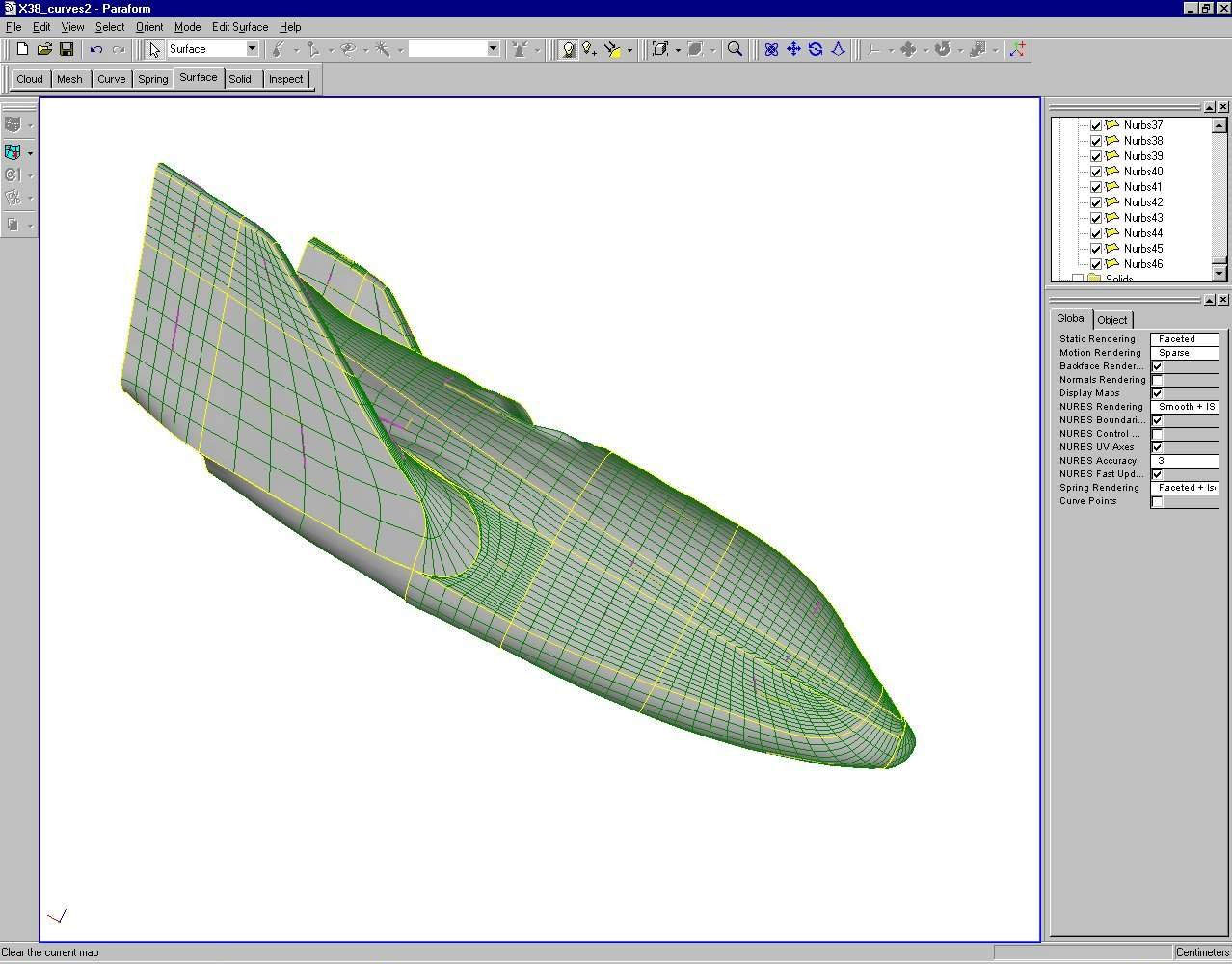 |
By courtesy of NASA Dryden Flight Research Centers.
